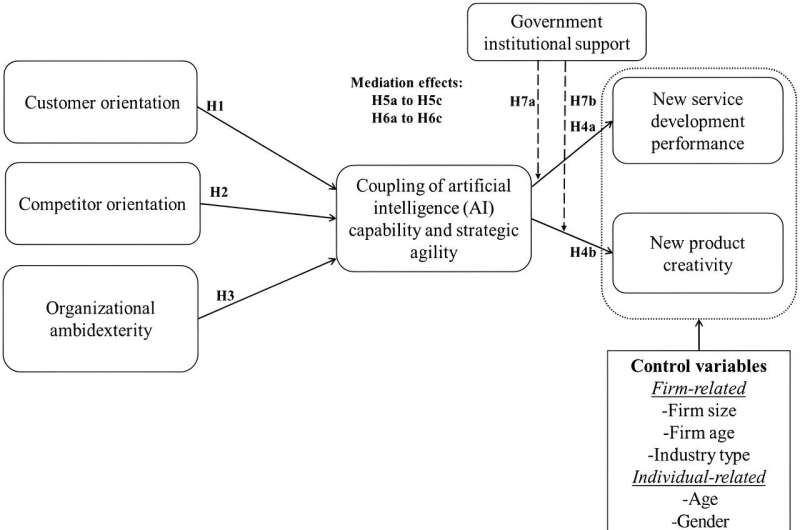
New research published in the British Journal of Management, led by a Royal Holloway academic, suggests that organizations who are willing to adapt their strategy and adopt new AI solutions will see higher levels of creativity.
The study was led by Dr. Nisreen Ameen from the School of Business and Management at Royal Holloway, University of London, Director of Digital Organization and Society (DOS) research center, in collaboration with four researchers from other U.K. and international universities.
Many organizations, such as Netflix, Spotify, and Lexus, have used AI for developing new products and services. Lexus produced the first filmed advertisement written entirely by AI, having trained the technology by using data from 15 years of their award-winning advertisements for luxury vehicles.
Generative AI that supports creative processes by generating ideas, words, or images includes services like ChatGPT, Jasper, and Writesonic. Generative AI can help organizations build powerful, personalized content and customer experiences that can help organizations to be creative.
Despite these creative benefits, 85% of AI and machine-learning projects fail to produce a return for the organization. To turn their use of AI into a success, organizations need to restructure teams, develop their AI capability by acquiring new skills, and promote agility in the workforce. A key challenge for managers is the need to make effective use of their resources, capabilities, and external support to successfully implement AI solutions.
The aim of this research was to determine whether the combination of two factors—strategic agility and AI capability—would directly correlate to higher levels of creativity. Previous research had focused on either strategic agility or AI capability in isolation, without exploring the effects of both in tandem.
AI capability is an organization's ability to select, orchestrate, and make use of its AI-specific resources: combining AI and human intelligence. Meanwhile, strategic agility is defined as an organization's ability to invent new business models and categories, as opposed to rearranging old products and categories. High strategic agility in organizations is associated with stronger employee commitment and motivation.
The researchers collected responses to several questions around strategic agility, AI capability and creativity. The survey was distributed to managers of 600 organizations in China, collecting responses to a series of questions from one manager per company. These companies were diverse in their nature, ranging from financial services and IT organizations to sales, marketing and health organizations.
By determining various companies' engagement with AI solutions, as well as their readiness to adapt to new opportunities—or strategic agility—the researchers were able to determine how these factors combined can increase levels of product and service creativity.
The higher levels of creativity were measured by taking the survey responses and using complex structural equation modeling (SEM) methods that show cause and effect. This modeling was used to demonstrate higher level of 'new product creativity'—which was an increase in developing new and interesting products, offering new product ideas and developing products that encourage fresh thinking.
More information: Nisreen Ameen et al, Coupling Artificial Intelligence Capability and Strategic Agility for Enhanced Product and Service Creativity, British Journal of Management (2024). DOI: 10.1111/1467-8551.12797
Citation: Companies can become more creative by adapting their strategy to include AI and generative AI (2024, February 6) retrieved 6 February 2024 from https://techxplore.com/news/2024-02-companies-creative-strategy-ai-generative.html
This document is subject to copyright. Apart from any fair dealing for the purpose of private study or research, no part may be reproduced without the written permission. The content is provided for information purposes only.
